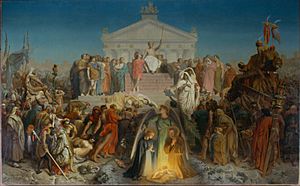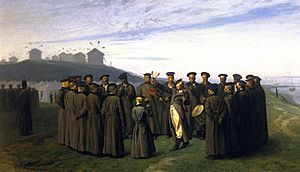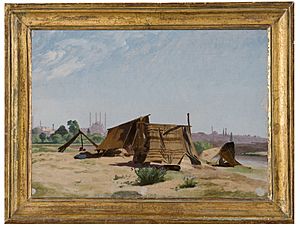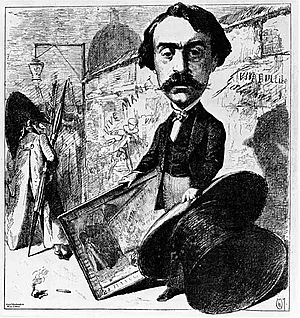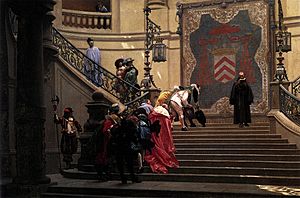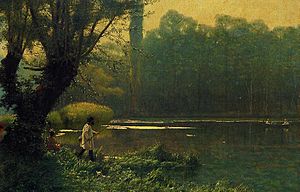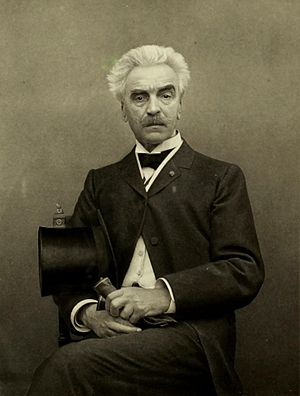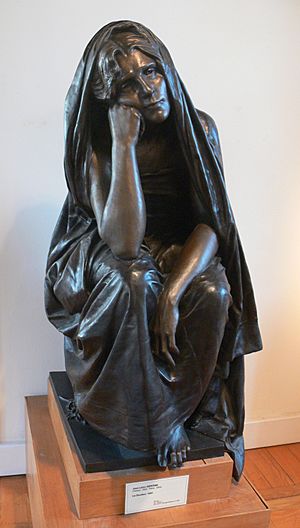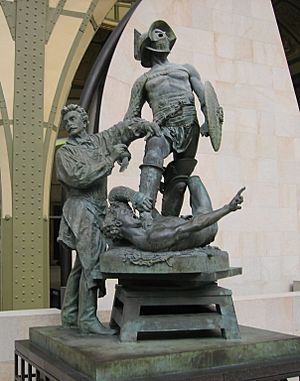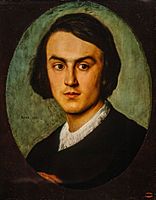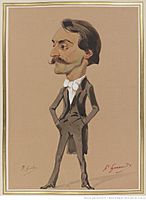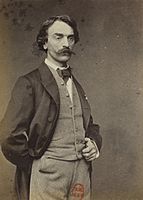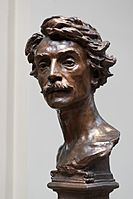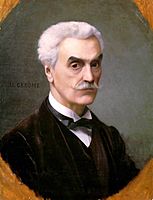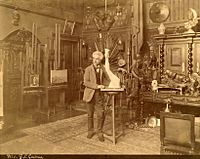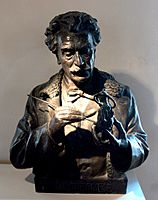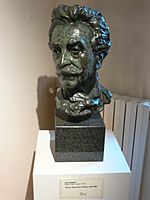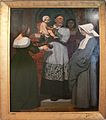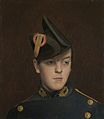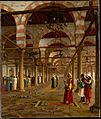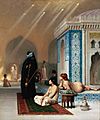Jean-Léon Gérôme facts for kids
Quick facts for kids
Jean-Léon Gérôme
|
|
|---|---|
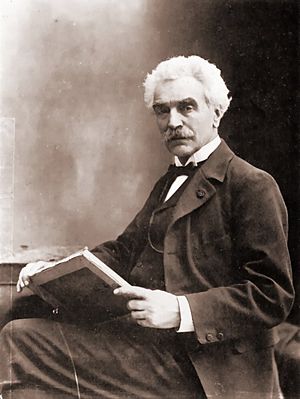
Photograph by Nadar
|
|
| Born | 11 May 1824 Vesoul, Haute-Saône, France
|
| Died | 10 January 1904 (aged 79) Paris, France
|
| Education | Paul Delaroche, Charles Gleyre |
| Known for | Painting, sculpture, teaching |
| Movement | Academicism, Orientalism |
Jean-Léon Gérôme (born May 11, 1824 – died January 10, 1904) was a famous French artist. He was a painter and sculptor. His style is known as academicism. Many people saw his paintings. By 1880, he was one of the most famous artists in the world.
Gérôme painted many different things. He created history paintings, scenes from Greek mythology, and pictures of the Middle East (called Orientalism). He also painted portraits. He is seen as one of the most important painters of his time. Gérôme was also a teacher. He taught many students during his long career.
Contents
- Becoming an Artist: Jean-Léon Gérôme's Early Life
- Big Art Projects: Gérôme's Important Commissions
- Exploring the East: Gérôme's Orientalist Art
- Back to Ancient Times: Gérôme's Classical Subjects
- Teaching Art: Gérôme at the École des Beaux-Arts
- Awards and Famous Works: Gérôme's Mid-Career
- Creating Statues: Gérôme's Sculpture Work
- Later Years: The Pygmalion and Tanagra Art Series
- Truth: Gérôme's Later Works
- The End of a Life: Gérôme's Death
- Gérôme's Lasting Impact
- Images for kids
- Images for kids
- See also
Becoming an Artist: Jean-Léon Gérôme's Early Life
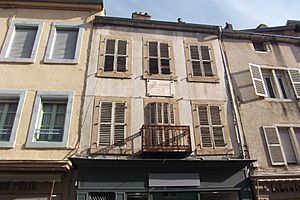
Jean-Léon Gérôme was born in Vesoul, France. In 1840, he moved to Paris. There, he studied art with Paul Delaroche. Gérôme traveled to Italy with Delaroche in 1843. He visited famous cities like Florence and Rome. He also saw the Vatican and Pompeii.
When he returned to Paris in 1844, Gérôme joined Charles Gleyre's art studio for a short time. He also attended the famous École des Beaux-Arts art school. In 1846, he tried to win the important Prix de Rome art prize. But he did not win because his figure drawings were not good enough.
His painting The Cock Fight (1846) helped him become famous. It showed a young man and woman with two fighting roosters. This painting won a medal at the Paris Salon art show in 1847. It was a great example of the Neo-Grec art style. A famous art critic, Théophile Gautier, praised his work. This helped Gérôme's career take off.
Gérôme then stopped trying for the Prix de Rome. He focused on his new success. His paintings The Virgin, the Infant Jesus and Saint John and Anacreon, Bacchus and Eros won another medal in 1848. In 1849, he painted Michelangelo and A Portrait of a Lady.
In 1851, he decorated a special vase. Emperor Napoleon III of France later gave this vase to Prince Albert. It is now in the Royal Collection in London. Gérôme showed more paintings in 1852 and 1853.
Big Art Projects: Gérôme's Important Commissions
In 1852, Gérôme got a big job. He was asked to paint a large mural. He chose to paint The Age of Augustus, the Birth of Christ. This painting showed the birth of Christ. It also showed conquered nations honoring the Roman emperor Augustus. This work might have been meant to please Napoleon III. His government ordered the mural.
A large payment for this mural allowed Gérôme to travel. He went to Constantinople in 1853. In 1854, he visited Greece and Turkey. He even saw Russian soldiers making music under threat of punishment.
In 1853, Gérôme moved to a group of art studios in Paris. This place became a meeting spot for artists, writers, and actors. Famous people like George Sand and Hector Berlioz visited there.
In 1854, he finished another important project. He decorated a chapel in the church of St. Séverin in Paris. His painting Last Communion of St. Jerome showed the influence of the Ingres art school.
At the Universal Exhibition of 1855, he showed several paintings. Recreation in a Russian Camp got the most attention.
Exploring the East: Gérôme's Orientalist Art
In 1856, Gérôme traveled to Egypt for the first time. He followed a popular route through the Middle East. He went up the Nile River to Cairo. Then he traveled to Abu Simbel. He also crossed the Sinai Peninsula to Jerusalem and Damascus. This trip led him to create many Orientalist paintings. These works showed Arab religious practices, daily life scenes, and North African landscapes.
During his travels, Gérôme collected items and clothes. He used these to set up his Oriental scenes in his studio. He also made oil sketches outdoors for the backgrounds. In 1878, Gérôme wrote about how important these sketches were. He said he would work hard even after long walks in the sun. He felt that a few touches of color on canvas were better than just a memory.
Gérôme's fame grew at the Paris Salon of 1857. He showed paintings like Egyptian Recruits Crossing the Desert and Camels Watering. His painting Suite d'un bal masqué was bought by a duke. Gérôme made a copy of it in 1859, called The Duel After the Masquerade. This copy is now in the Walters Art Museum.
Back to Ancient Times: Gérôme's Classical Subjects
In 1858, Gérôme helped decorate a prince's house in Paris. It was styled like ancient Pompeii. The prince had also bought Gérôme's Greek Interior painting.
In 1859, Gérôme showed Ave Caesar! Morituri te Salutant at the Salon. This painting returned to ancient Roman themes. But it did not get much public interest. His paintings King Candaules (1859) and Phryne Before the Areopagus (1861) caused some controversy. Critics attacked them because of their subjects. He also showed two very detailed works in 1861.
In 1863, Gérôme married Marie Goupil. She was the daughter of a famous art dealer. They had four daughters and one son. After his marriage, he moved to a large house in Paris. He built a sculpture studio downstairs and a painting studio upstairs.
Teaching Art: Gérôme at the École des Beaux-Arts
Gérôme became one of the main teachers at the École des Beaux-Arts. He started with sixteen students. From 1864 to 1904, over 2,000 students learned art from Gérôme. Getting a spot in his studio was very difficult. Only the best students were chosen.
Gérôme taught his students step-by-step. They first drew from old statues. Then they drew from live models. These models were chosen for their bodies or facial expressions. Students started by drawing parts of a statue. Then they drew the whole statue. Next, they drew parts of a live model. Finally, they drew full figures. Only after mastering sketching could they use oil paints. They also learned to draw clearly before focusing on colors. The studio floor was sloped. This way, students could see the model clearly from anywhere. Older students sat at the back to draw the whole figure. Younger students sat closer to focus on specific body parts.
Gérôme came to class every Wednesday and Saturday. He expected students to follow his instructions carefully. He was known for being a strict critic. One of his students said Gérôme was "merciless in judgment." But he also had a "singular magnetism." Even though he was demanding, Gérôme helped his students a lot outside of class. He invited them to his own studio. He also recommended them to the Paris Salon art show.
Awards and Famous Works: Gérôme's Mid-Career
Gérôme was chosen as a member of the Institut de France in 1865. He had tried five times before. He was already a knight and became an officer in the Légion d'honneur in 1867. In 1869, he became an honorary member of the British Royal Academy. The King of Prussia gave him a special award. Gérôme became very influential. He was often a guest at the Imperial Court.
He was invited to the opening of the Suez Canal in 1869. The Society of French Orientalist Painters, started in 1893, made Gérôme their honorary president.
His painting The Execution of Marshal Ney was shown in 1868. Ney's family asked Gérôme to remove it, but he did not. People had very different opinions about the painting. This Salon show started a long disagreement between Gérôme and many French art critics. They said he used too many story-telling tricks. They also accused him of making art for money and bringing politics into art. A cartoon showed Gérôme being shot by art critics.
In 1872, Gérôme painted Pollice Verso. This painting showed bloody gladiators and Vestal virgins in the Colosseum. It became one of his most famous works. A collector bought it for a very high price. Gérôme's image of a turned thumb, meaning life or death for a gladiator, was used in many movies. This includes the movie Gladiator.
Gérôme had success at the Salon again in 1873. He showed L'Eminence Grise. This colorful painting showed the palace of Cardinal Richelieu. Richelieu was France's ruler under King Louis XIII. In the painting, a friar called L'Eminence Grise (the Gray Cardinal) walks down stairs reading the Bible. Everyone bows to him or watches him. He was Richelieu's main helper. He was known as "the power behind the throne."
Creating Statues: Gérôme's Sculpture Work
In his thirties, Gérôme started making sculptures. His first sculpture was a large bronze statue of a gladiator. It was based on his painting Pollice Verso (1872). He showed it at an exhibition in 1878. That same year, he showed a marble statue at the Salon. It was based on his earlier painting Anacreon, Bacchus and Eros.
Gérôme also tried coloring marble. He made Dancer with Three Masks. This statue combined movement with color. It was first shown in 1902.
Other sculptures he made include Omphale (1887). He also made a statue of the duc d'Aumale. This statue stands in front of the Château de Chantilly (1899).
He mixed different materials for his statues. He used colored marble, bronze, and ivory. He also added jewels and paste. His Dancer was shown in 1891. His life-size statue Bellona was made of ivory, bronze, and gemstones. It got a lot of attention at an exhibition in London in 1892.
Gérôme then started a series of statues of famous conquerors. These were made of gold, silver, and gems. They included Bonaparte Entering Cairo (1897) and Tamerlane (1898).
In 1903, Gérôme made two sculptures for an American millionaire. They were called Metallurgical Worker and Metallurgical Science. They were meant to celebrate steel production. The millionaire even sent a real steel worker to Paris to pose for the statues.
Later Years: The Pygmalion and Tanagra Art Series
Around 1890, Gérôme found new ideas from the ancient world. He created a series of paintings and sculptures that were connected. These works showed Pygmalion and Galatea. They also featured the spirit of Tanagra and even himself.
In 1890, Gérôme made at least two paintings of Pygmalion. Pygmalion was a mythical Greek sculptor. He kissed his statue of Galatea as she turned into a real person. The most famous painting, Pygmalion and Galatea, is in the Metropolitan Museum of Art. It shows the sculptor and statue from behind. Another version shows them from the front.
Also in 1890, people were very interested in ancient Tanagra figurines. These small statues had been found in Greece. Gérôme sculpted a 5-foot-tall, colored marble statue called Tanagra. She holds a small statue of a female Hoop Dancer in her hand. This Hoop Dancer was Gérôme's own idea.
Gérôme later made smaller, bronze versions of Tanagra. He also made several versions of the "Hoop Dancer" figurine. These became his most popular sculptures. He painted two pictures of an imaginary ancient Tanagra workshop. In these, copies of his own Hoop Dancer were on display. He also painted two self-portraits of himself sculpting Tanagra. In these, you can see a Hoop Dancer and two versions of Pygmalion and Galatea in the background. This complex self-portrait shows Gérôme's amazing career as both a painter and sculptor.
Gérôme also sculpted a colored marble Pygmalion and Galatea in 1891. It was based on his paintings.
In these works, Gérôme explored ancient times. He showed how painting and sculpture, and reality and art, connect. He also highlighted the dramatic nature of an artist's studio.
Truth: Gérôme's Later Works
In his last ten years, starting in the mid-1890s, Gérôme made at least four paintings about Truth. He showed Truth as a woman. She was either thrown into a well, at the bottom of a well, or coming out of one. This idea came from an old saying by the philosopher Democritus. He said, "Of truth we know nothing, for truth is in a well."
The End of a Life: Gérôme's Death
On December 31, 1903, Gérôme wrote to a student. He said he was tired of life. He had seen too much sadness. He wanted to escape. He died just ten days later.
On January 10, 1904, his maid found him dead. He was 79 years old.
Gérôme wanted a simple burial without flowers. But a special memorial service was held for him. Many important people attended, including a former president. He was buried in the Montmartre Cemetery. His grave is in front of his statue La Douleur (Pain). He had made this statue for his son Jean, who died in 1891.
Gérôme's Lasting Impact
Gérôme's influence lived on through his many students. They came from many countries. Some famous students include Odilon Redon, Mary Cassatt, and Thomas Eakins.
Gérôme worked very hard for a long time. He was very popular. This means he created a huge amount of art. His works are now in museums and private collections worldwide. A list of his works from 2018 includes about 700 paintings and 70 sculptures.
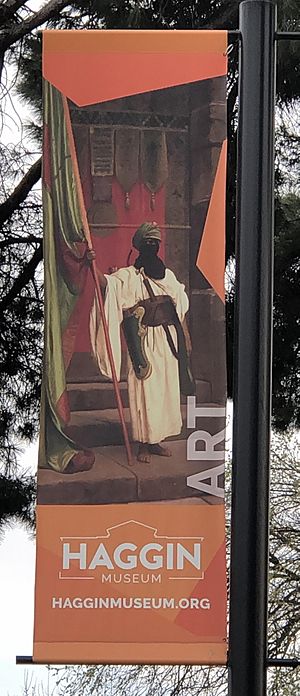
Gérôme's fame and popularity went down in the 1900s. For example, his painting The Snake Charmer sold for $19,500 in 1888. But it sold for only $500 in 1942. Now, his works are popular again. They are highly sought after in the art market. In 2008, his painting Femme circassienne voilée sold for over 2 million British Pounds. In 2019, The Harem in the Kiosk sold for over 2.6 million British Pounds. His painting Riders Crossing the Desert sold for over 3.1 million British Pounds.
The largest collection of Gérôme's art is in the Musée Georges-Garret in his hometown of Vesoul. Gérôme gave several works to the museum during his life. His family gave more works after he died.
Images for kids
-
Robert Jefferson Bingham, a portrait of Gérôme, between 1860 and 1875.
-
Jean-Baptiste Carpeaux, a bust (head and shoulders statue) of Jean-Léon Gérôme, after 1871.
Images for kids
-
Saint Vincent de Paul, 1847.
-
Bonaparte Before the Sphinx, also called Œdipe, 1886.
-
Sarah Bernhardt, marble statue, around 1895.
See also
 In Spanish: Jean-Léon Gérôme para niños
In Spanish: Jean-Léon Gérôme para niños
- List of Orientalist artists
- List of pupils of Jean-Léon Gérôme
- Société des Peintres Orientalistes Français (Society of French Orientalist Painters)
- List of paintings by Jean-Léon Gérôme


